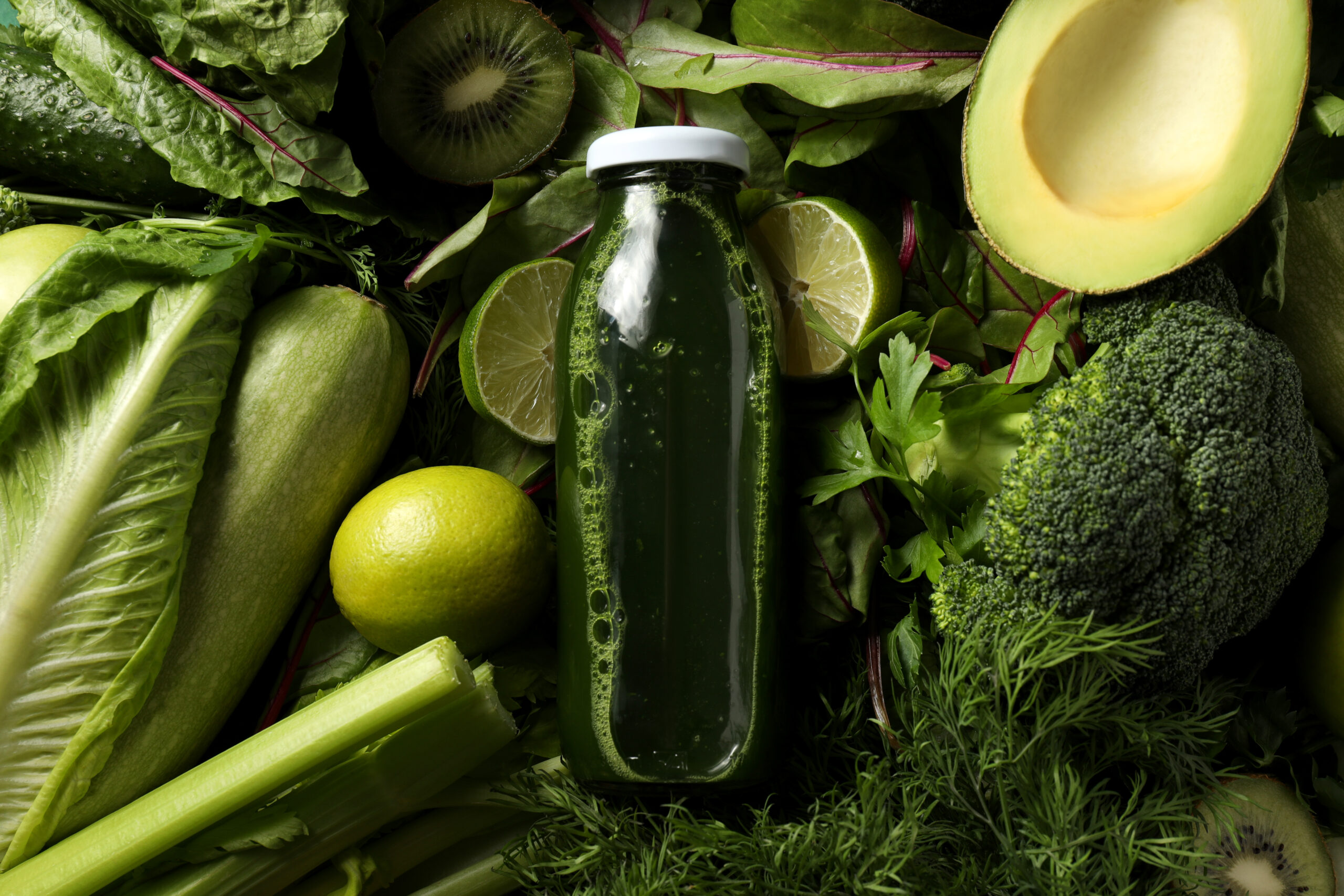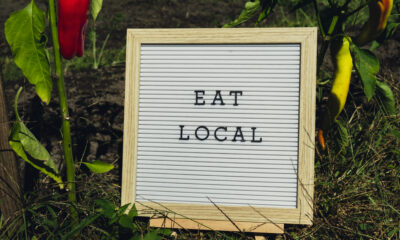Lifestyle
Gut Health & Functional Nutrition: The Science-Backed Guide to Optimal Digestion and Wellness
Discover how gut health and functional nutrition can transform your digestion, immunity, and overall well-being. Learn the best foods, supplements, and lifestyle habits for a healthier gut.

Your gut is often called your “second brain”—and for good reason. Research from Harvard Medical School shows that 70% of your immune system resides in your gut, and an imbalance in gut bacteria can lead to digestive issues, inflammation, and even mood disorders.
Functional nutrition takes a root-cause approach to healing, using food as medicine to restore gut balance. In this guide, you’ll learn:
✔️ The gut-brain connection and why it matters
✔️ Top signs of an unhealthy gut (and how to fix them)
✔️ Best foods for gut healing (plus what to avoid)
✔️ Functional nutrition strategies to optimize digestion
✔️ A 7-day gut-healing meal plan
Let’s dive in!
Part 1: The Gut-Brain Connection – Why Your Gut Controls More Than Digestion
How Your Gut Impacts Overall Health
Your gut microbiome—home to trillions of bacteria—plays a crucial role in:
- Digestion & nutrient absorption (NIH Study)
- Immune function (Cleveland Clinic)
- Mental health (anxiety & depression) (Nature Journal)
- Metabolism & weight management (Mayo Clinic)
5 Warning Signs of an Unhealthy Gut
- Bloating, gas, or constipation
- Food intolerances (like gluten or dairy)
- Frequent infections or weak immunity
- Skin issues (eczema, acne)
- Brain fog & mood swings
If you experience these, your gut may need attention!
Part 2: Functional Nutrition – The Best Foods for Gut Healing
Top 5 Gut-Healing Superfoods
- Bone Broth – Rich in collagen and glutamine, which repair the gut lining (Healthline)
- Fermented Foods – Sauerkraut, kimchi, and kefir boost probiotics (Harvard Health)
- Fiber-Rich Veggies – Asparagus, leeks, and garlic feed good bacteria (NIH Study)
- Omega-3 Fats – Wild salmon and flaxseeds reduce gut inflammation (American Heart Association)
- Prebiotic Foods – Bananas, apples, and chicory root support microbiome diversity (WebMD)
Foods That Harm Your Gut
🚫 Processed sugar (feeds bad bacteria)
🚫 Artificial sweeteners (disrupt microbiome)
🚫 Industrial seed oils (promote inflammation)
🚫 Gluten & dairy (if sensitive)
Part 3: Functional Nutrition Strategies for Optimal Gut Health
1. Eat More Probiotic & Prebiotic Foods
- Probiotics (live bacteria): Yogurt, kombucha, miso
- Prebiotics (fiber for bacteria): Onions, garlic, oats
2. Try an Elimination Diet
Remove common irritants (gluten, dairy, soy) for 30 days, then reintroduce them to identify sensitivities.
3. Support Digestion with Supplements
- L-Glutamine (repairs gut lining)
- Digestive enzymes (improve nutrient absorption)
- Colostrum (boosts gut immunity)
4. Manage Stress for Better Digestion
Chronic stress worsens leaky gut (APA Study). Try:
- Mindful eating (chew slowly)
- Deep breathing exercises
- Daily movement (walking, yoga)
Part 4: 7-Day Gut-Healing Meal Plan
Day 1
- Breakfast: Chia pudding with almond milk & berries
- Lunch: Grilled salmon with quinoa & steamed veggies
- Dinner: Bone broth soup with turmeric
Day 2
- Breakfast: Smoothie with spinach, banana, and flaxseeds
- Lunch: Fermented kimchi with brown rice
- Dinner: Baked chicken with roasted sweet potatoes
(Continue for Days 3-7 with similar gut-friendly meals.)
Conclusion: Heal Your Gut, Transform Your Health
Your gut health impacts everything—from digestion to immunity, mood, and energy. By following functional nutrition principles, you can restore balance naturally.
Ready to start? Try the 7-day meal plan and notice the difference in how you feel!
Lifestyle
The Digital Detox Revolution: Rediscovering Joy Through Analog Hobbies
Feeling overwhelmed by screens? Discover the power of a digital detox and explore 10 rewarding analog hobbies to reduce stress, boost creativity, and reclaim your focus.

The average person spends over 7 hours daily staring at screens (Nielsen Report), leading to digital fatigue, anxiety, and poor sleep. A digital detox—intentionally unplugging from devices—can restore mental clarity and improve well-being.
But what should you do instead? Analog hobbies offer a perfect escape—activities that engage your hands, mind, and senses without screens. In this guide, you’ll learn:
✔️ The science behind digital burnout (and why unplugging helps)
✔️ 10 fulfilling analog hobbies to replace screen time
✔️ How to start a digital detox (without feeling lost)
✔️ A 7-day challenge to ease into offline living
Let’s dive in!
Part 1: The Hidden Costs of Digital Overload
How Screens Affect Your Brain & Body
- Increased stress & anxiety (APA Study)
- Poor sleep quality (blue light disrupts melatonin) (Sleep Foundation)
- Reduced attention span (shorter than a goldfish!) (Microsoft Study)
- Less creativity & deep thinking (Cal Newport, Digital Minimalism)
Signs You Need a Digital Detox
🔴 Mindless scrolling for hours
🔴 Feeling anxious without your phone
🔴 Difficulty focusing on real-life conversations
🔴 Constant neck or eye strain
If this sounds familiar, it’s time to unplug and recharge.
Part 2: 10 Rewarding Analog Hobbies to Try
1. Journaling (Pen & Paper Style)
- Benefits: Reduces stress, boosts self-awareness
- Try: morning pages and gratitude journaling
2. Reading Physical Books
- Why it’s better than e-books: Less eye strain, improved retention (NIH Study)
- Recommendations: Classic novels, poetry, or memoirs
3. Gardening (Even in Small Spaces)
- Science-backed perks: Lowers cortisol, increases happiness (University of Exeter)
- Start with: Herbs, succulents, or balcony veggies
4. Cooking from Scratch
- Why analog? Engages all five senses, reduces stress
- Try: Baking bread, fermenting foods, or meal prepping
5. Drawing or Painting
- Boosts: Creativity, mindfulness, and problem-solving
- No talent needed: Doodle, sketch, or try watercolors
6. Playing a Musical Instrument
- Brain benefits: Enhances memory, coordination, and mood (Harvard Health)
- Beginner-friendly: Ukulele, harmonica, or piano
7. Woodworking or DIY Crafts
- Why it’s satisfying: Tangible results, sense of accomplishment
- Starter projects: Birdhouses, candles, or hand-carved spoons
8. Hiking & Nature Walks
- Science says: Nature reduces stress and boosts creativity (Stanford Study)
- Pro tip: Leave your phone behind (or on airplane mode)
9. Board Games & Puzzles
- Social + screen-free fun: Chess, Scrabble, or 1000-piece puzzles
- Cognitive perks: Improves memory and strategic thinking
10. Handwriting Letters
- Why it’s special: Deepens relationships, slows down communication
- Try: Sending postcards to friends or family
Part 3: How to Start Your Digital Detox (Without Quitting Cold Turkey)
Step 1: Set Clear Boundaries
- “No-phone zones” (bedroom, dining table)
- Designated screen-free hours (e.g., after 8 PM)
Step 2: Replace Scroll Time with Analog Activities
- Instead of Instagram →, sketch or read
- Instead of Netflix →, play a board game
Step 3: Use Tech to Detox from Tech
- Apps that help: Freedom (blocks distractions), Forest (grows trees when you stay off your phone)
Step 4: Try a 7-Day Digital Detox Challenge
| Day | Challenge |
|---|---|
| 1 | No social media before noon |
| 2 | Read a book for 30 mins instead of TV |
| 3 | Take a walk without your phone |
| 4 | Write a handwritten letter |
| 5 | Cook a meal from scratch |
| 6 | Play a board game with family |
| 7 | Full day without screens (if possible!) |
Conclusion: Reclaim Your Time & Attention
A digital detox isn’t about abandoning technology—it’s about rebalancing your life. By embracing analog hobbies, you’ll rediscover the joy of slower, more meaningful activities.
Which hobby will you try first? Share in the comments!
Lifestyle
The Ultimate Guide to Hormone-Balancing Routines: 10 Science-Backed Habits for Optimal Health
Discover proven hormone-balancing routines to boost energy, improve mood, and support metabolism naturally. Learn the best foods, exercises, and daily habits for hormonal harmony from leading health authorities.

Introduction: Why Hormone Balance is the Key to Feeling Your Best
Hormones are your body’s chemical messengers, controlling everything from metabolism and mood to sleep and stress response. When they’re balanced, you feel energetic, mentally sharp, and emotionally stable. But when they’re out of sync, you may experience fatigue, weight gain, mood swings, and other frustrating symptoms.
The good news? You can restore hormonal harmony naturally with simple, consistent hormone-balancing routines. In this comprehensive guide, we’ll explore:
✔️ How hormones work and signs of imbalance
✔️ 10 science-backed habits to regulate hormones naturally
✔️ The best foods for hormonal health
✔️ A sample daily routine for optimal balance
Let’s dive in!
Part 1: Understanding Hormonal Imbalance – Signs & Causes
What Are Hormones, and Why Do They Matter?
Hormones are chemicals produced by glands like the thyroid, adrenals, and ovaries/testes. They regulate:
- Metabolism (thyroid hormones)
- Stress response (cortisol)
- Sleep-wake cycles (melatonin)
- Reproductive health (estrogen, progesterone, testosterone)
When these hormones are imbalanced, you may experience:
- Chronic fatigue
- Weight gain (especially around the belly)
- Mood swings & anxiety
- Insomnia or poor sleep
- Irregular periods (for women)
- Low libido
Common Causes of Hormonal Imbalance
- Chronic stress (elevated cortisol disrupts other hormones)
- Poor sleep (disrupts melatonin and growth hormone)
- Processed foods & sugar (spikes insulin)
- Toxins (plastics and pesticides act as endocrine disruptors)
- Sedentary lifestyle (affects insulin sensitivity)
Part 2: 10 Science-Backed Hormone-Balancing Routines
1. Start Your Day with Sunlight
Exposure to natural light within 30 minutes of waking helps regulate cortisol (your stress hormone) and melatonin (sleep hormone). Try:
- A 10-minute morning walk
- Drinking coffee outside (skip sunglasses for best effects)
2. Eat a Protein-Rich Breakfast
Protein stabilizes blood sugar and supports thyroid function. Great options:
- Eggs
- Greek yogurt with nuts
- Chia seed pudding
3. Practice Stress-Reduction Techniques
Chronic stress raises cortisol, which disrupts other hormones. Try:
- Deep breathing (4-7-8 method)
- Yoga or meditation (even 10 minutes helps)
- Adaptogenic herbs (like ashwagandha)
4. Strength Train 2-3x Per Week
Resistance training boosts growth hormone and improves insulin sensitivity. Focus on:
- Squats
- Deadlifts
- Push-ups
5. Prioritize Sleep (7-9 Hours Nightly)
Poor sleep wreaks havoc on cortisol, leptin (hunger hormone), and ghrelin (appetite hormone). Tips:
- Avoid screens 1 hour before bed
- Keep your room cool (65°F is ideal)
- Try magnesium glycinate for relaxation
6. Eat Healthy Fats Daily
Fats are essential for producing hormones. Best sources:
- Avocados
- Salmon (rich in omega-3s)
- Olive oil
7. Limit Sugar & Refined Carbs
Excess sugar spikes insulin, leading to weight gain and PCOS. Swap for:
- Berries (low-glycemic)
- Sweet potatoes (fiber-rich)
8. Support Gut Health
A healthy gut helps metabolize hormones like estrogen. Try:
- Probiotic foods (sauerkraut, kefir)
- Fiber-rich veggies (broccoli, Brussels sprouts)
9. Reduce Toxin Exposure
Endocrine disruptors in plastics and cosmetics mimic hormones. Avoid:
- BPA plastics
- Parabens in skincare
10. Sync with Your Circadian Rhythm
Going to bed and waking at the same time regulates cortisol and melatonin.
Part 3: Hormone-Balancing Foods to Eat Daily
| Food | Hormones It Supports |
|---|---|
| Flaxseeds | Estrogen balance |
| Brazil nuts | Thyroid (selenium) |
| Bone broth | Gut health & cortisol |
| Leafy greens | Detoxification |
Sample Daily Hormone-Balancing Routine
Morning:
- 7 AM: Wake up, sunlight exposure
- 7:30 AM: Protein breakfast (eggs + avocado)
- 8 AM: 10-minute walk
Afternoon:
- 12 PM: Lunch (salmon + quinoa + greens)
- 3 PM: Herbal tea (chamomile for stress)
Evening:
- 6 PM: Strength training or yoga
- 8 PM: Dinner (turkey + sweet potato)
- 10 PM: Wind down (no screens, magnesium supplement)
Conclusion: Small Changes, Big Hormonal Shifts
You don’t need extreme diets or expensive supplements to balance your hormones. By incorporating these 10 science-backed routines, you can restore energy, improve mood, and boost metabolism naturally.
Which habit will you try first? Let us know in the comments!
Lifestyle
Trek & Taste: Hidden Trails and Local Eats in Europe
Discover Europe’s best hidden hiking trails paired with authentic local eats. From shepherd’s paths in the Pyrenees to lemon groves on the Amalfi Coast, find your perfect trek & taste adventure with our insider guide to off-the-beaten-path experiences.

There’s a secret rhythm to traveling that most tourists never discover. It’s found in the crunch of gravel under your boots on an ancient footpath, followed by the first bite of a steaming homemade pastry at a village bakery. This is the real Europe – where breathtaking hikes lead to unforgettable meals, and every trail tells a story.
After a decade of exploring Europe’s less-trodden paths, I’ve learned that the best adventures combine movement and meals. The perfect day? A challenging morning hike rewarded with local specialties at a family-run tavern, then an afternoon stroll through vineyards to work up an appetite for dinner. Here’s my guide to Europe’s most delicious trails and the authentic flavors waiting at the end of each one.
Why Combine Hiking and Eating in Europe?
1. Earn Your Calories the Old-Fashioned Way
There’s something deeply satisfying about devouring a plate of handmade pasta after climbing an Italian mountainside. Europeans have perfected this balance for centuries – hearty regional cuisines designed to fuel active lifestyles.
2. Discover the Real Local Culture
The tourist restaurants in city centers serve watered-down versions of local dishes. But hike to a remote alpine hut or coastal village, and you’ll taste recipes passed down through generations, made with ingredients from nearby farms.
3. Escape the Crowds
While Instagrammers queue for overpriced cafés in Paris and Rome, you could be enjoying fresh-baked bread from a wood-fired oven in Slovenia, with only the sound of cowbells for company.
My Favorite Hidden Hikes & Food Stops
1. The Shepherd’s Trail, Pyrenees (France/Spain)
- The Hike: A 5-hour loop through flower-filled meadows where shepherds still graze their flocks
- The reward: Tarte aux Myrtilles (blueberry tart) at Ferme-Auberge de Bassiès, made with berries picked that morning
- Local Tip: Ask for the gâteau à la broche – a spit-roasted cake that’s a mountain specialty
2. The Path of the Gods, Amalfi Coast (Italy)
- The Hike: Cliffside trail with heart-stopping views over lemon groves to the sea
- The Reward: Delizie al Limone (lemon cream cakes) at Pansa in Amalfi, using fruit from the terraces you just passed
- Secret Spot: Nonna Rosa’s garden near Bomerano – knock for fresh lemonade if the flag’s out
3. Green Lakes Trail, Austria
- The Hike: Easy 3-hour walk past surreal emerald lakes
- The Reward: Kaiserschmarrn (caramelized pancake) at Gasthof Grüner See, served with homemade plum jam
- Bonus: The owner’s son leads foraging tours – join one to find ingredients for your dinner
How to Find These Hidden Gems
1. Talk to Older Locals
At village markets or small bakeries, ask, “Where do you go walking on your day off?” Then: “Where would you eat after?”
2. Follow the Farmers
Rural restaurants serving truly local food often have:
- Handwritten menus
- No website (or a terrible one)
- Opening hours that make no sense to tourists
3. Learn These Key Phrases
- “What’s your grandmother’s signature dish?”
- “Where do locals buy their hiking snacks?”
- “Is there a food producer we can visit along the trail?”
Essential Hiking Foods to Try
1. The Perfect Picnic
- France: Fougasse (herb-filled flatbread) + Tomme de Savoie cheese
- Switzerland: Bündnerfleisch air-dried meat + Rye bread
- Greece: Koulouri sesame rings + Manouri cheese
2. Trailside Treats
- Portugal: Pastel de Nata custard tarts (best when still warm)
- Germany: Lebkuchen gingerbread (the hiker’s energy bar)
- Norway: Brunost brown cheese on waffles (yes, really)
Planning Your Trek & Taste Adventure
1. Time It Right
- Bakeries are best before 10 AM
- Rural restaurants often stop serving lunch by 2 PM
- Many close 1-2 days a week (usually Monday/Tuesday)
2. Pack Smart
- A lightweight cooler bag for cheese/charcuterie finds
- Collapsible containers for leftovers (you’ll want them)
- Reusable cutlery – many bakeries don’t provide any
3. Walk Off the Beaten Path
The magic happens when you:
- Take that unmarked side trail
- Stop at the farm with the handwritten “eggs/honey” sign
- Follow the smell of woodsmoke and baking bread
A Sample Perfect Day
7:30 AM: Buy warm croissants from the village bakery
8:00 AM: Start hike through wildflower meadows
11:30 AM: Picnic with local cheese at a viewpoint
2:00 PM: Arrive at mountain hut for hearty soup and bread
4:00 PM: Gentle downhill walk to vineyards
6:00 PM: Wine tasting with the winemaker
8:00 PM: Farmhouse dinner with ingredients you passed that day
Final Tip: Slow Down
The best food and trail combinations can’t be rushed. Stay an extra day in that valley with the amazing cheesemaker. Return to the bakery that made your perfect morning. Some flavors – like the best hikes – deserve to be savored slowly.
Now lace up your boots and bring your appetite. Europe’s most authentic experiences are waiting, one step and one bite at a time. For more European adventure inspiration, check out our guide to pet-friendly hiking trails.
-

 Business4 months ago
Business4 months agoHow to Fund Your Startup Without Giving Away Equity
-

 Lifestyle4 months ago
Lifestyle4 months agoTrek & Taste: Hidden Trails and Local Eats in Europe
-

 Entertainment4 months ago
Entertainment4 months agoThe Ultimate Guide to Game Reviews and Walkthroughs: Master Your Favorite Games
-

 Entertainment4 months ago
Entertainment4 months agoMission: Impossible – The Final Reckoning Reveals Stunning Arctic Location in New Behind-the-Scenes Featurette
-

 Tech5 months ago
Tech5 months agoWeb Development in 2025: Trends, Technologies & Best Practices
-

 Lifestyle4 months ago
Lifestyle4 months agoThe Digital Detox Revolution: Rediscovering Joy Through Analog Hobbies
-

 Business4 months ago
Business4 months agoWhy Consumers Are Choosing Ethical Brands And How You Can Be One
-

 Entertainment4 months ago
Entertainment4 months agoScandals That Shook the Entertainment World in 2025




